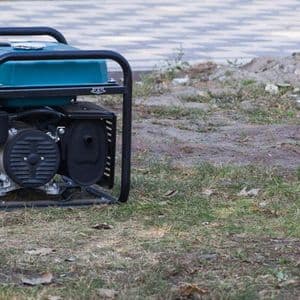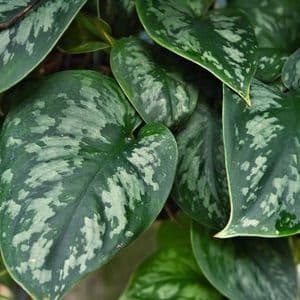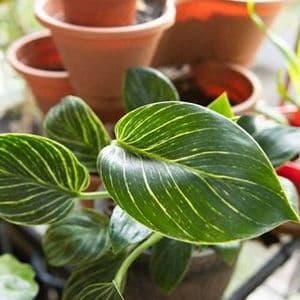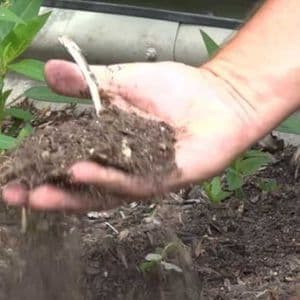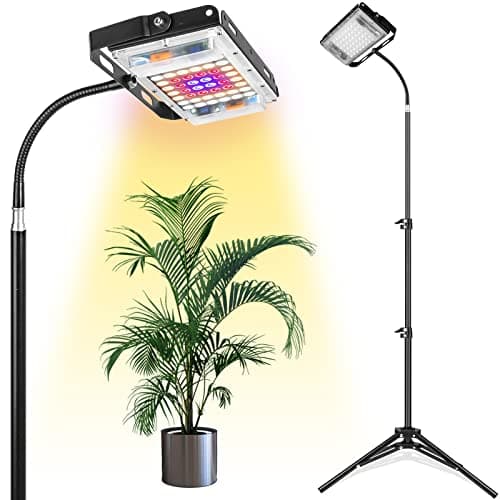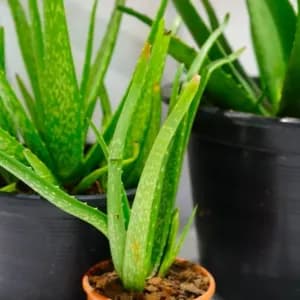Pothos are easy to grow and require little maintenance. You can easily grow them indoors or outdoors in the garden or house. They are available in a wide range of colors and leaf shapes. They can be grown from seed, cuttings, or by buying pothos plants. They can be planted directly into the soil or in pots. Let’s learn more about How to Grow and Care for Pothos to have beautiful plants in your home.
Overview
| Common Name |
|
| Botanical Name | Epipremnum aureum |
| Plant Type | Evergreen vine |
| Sun Exposure | Bright indirect light to low light |
| Mature Size | Up to 10 feet long as a houseplant, up to 40 feet long in the wild |
| Soil pH | 6.1 to 6.5 (slightly acidic) |
| Soil Type | Well-drained, peat-moss based potting mix |
| Flower Color | Greenish-white, rarely blooms indoors |
| Toxicity | Toxic to humans and pets if ingested |
Types of Pothos
- Jade Pothos: This type of pothos has dark green leaves and is one of the most popular varieties.
- Golden Pothos: This type of pothos has heart-shaped leaves that are variegated in green and yellow. It is also known as Devil’s Ivy.
- Marble Queen Pothos: This type of pothos has green and white variegated leaves that are heart-shaped.
- Neon Pothos: This type of pothos has bright neon green leaves that are heart-shaped.
- Pearls and Jade Pothos: This type of pothos has green and white variegated leaves that are smaller than those of Marble Queen Pothos.
- Glacier Pothos: This type of pothos has green and white variegated leaves that are smaller than those of Marble Queen Pothos.
How to Care for Pothos
Temperature and Humidity
Temperatures that are continuously over 50 degrees should be maintained for pothos. The ideal range for these plants is 65 to 75 degrees. Although they thrive in high humidity, pothos plants can also tolerate low humidity levels extremely well. If you'd like, you can make the space surrounding the plant more humid by placing it in a room that is generally humid, like a bathroom, or by putting additional tropical houseplants nearby to create a more humid microclimate.Soil
Unlike other kinds of plants that have more complex requirements, the pothos plant needs are quite simple. Potting mix will be your main concern. It should be organic and have adequate drainage to avoid getting wet feet.Water
Between waterings, allow the soil of your pothos plant to totally dry out. The plant's roots will decay if left in persistently moist soil. The plant may suddenly collapse or develop black patches on its leaves, both of which are signs that the soil has been maintained overly wet. [1] When it requires water, the plant will let you know. Water is necessary to rejuvenate it when it begins to droop. The plant will lose some leaves if you wait until the leaves begin to shrink. A plant that has dry, brown edges has been dried out too long.Fertilizer
Although pothos plants do not require frequent fertilization, it can be beneficial for them. During the spring and summer, treat pothos plants with a balanced houseplant fertilizer once a month. When the plant falls into dormancy in the winter, avoid fertilizing.Light
Pothos like both sun and shade, but you must keep an eye on it if there is too much of either. Pothos favors direct, strong light when planted indoors. Insufficient light can cause variegated plants to lose their leaf pattern and turn entirely green. The variegation is typically restored by moving them to brighter conditions. When leaves suddenly go pale, too much direct sunlight is being received by the plant.How to Grow Pothos
- Choose a healthy pothos plant.
- Choose a container that is slightly larger than the root ball of your pothos plant.
- Fill the container with well-draining soil that is rich in organic matter.
- Plant your pothos in the container and water it thoroughly.
- Place your pothos in a location that receives bright, indirect light.
- Water your pothos when the top inch of soil is dry to the touch.
- Fertilize your pothos once a month during the growing season with a balanced fertilizer.
- Prune your pothos as needed to control its size and shape.
Common Pothos Problems
Turning-Yellow Leaves
There are numerous reasons why a pothos plant's leaves could become yellow. As long as the plant is producing new growth, a single yellow leaf is nothing to worry about, but abrupt or widespread yellowing is. Overwatering-related root rot or a bacterial or fungal illness could be to blame.Browning Leaves
Pothos' brown leaves are unsightly and indicate a problem with the plant. Numerous factors, such as insufficient light or overwatering, might contribute to browned leaves. Dry, crunchy brown leaves suggest underwatering or a lack of humidity.Drooping Leaves
When the leaves of a pothos plant droop or wilt, the plant is under stress, frequently from a lack of water. Deep water your plant and keep an eye on the soil's moisture going ahead to prevent the soil from being too dry. Additionally, droopy leaves may indicate that a plant is diseased or is in a pot.Common Pests
Typically, pothos is pest-free. However, mealybug infestations with the plant have been known to occur. Aureum epipremnum. a botanical garden in Missouri. Use a cotton swab dipped in rubbing alcohol to remove the insects. Neem oil and insecticidal soap are other options for controlling infestations.Potting and Repotting Pothos
FAQs
Are Pothos Toxic?
Although pothos plants are poisonous to both people [2] and animals, they are not fatal if consumed. Pothos has calcium oxalate crystals that are insoluble and can irritate the skin, mouth, and gastrointestinal tract in its roots, leaves, and stems.Is pothos simple to care for?
Pothos plants require very little maintenance, and they may tolerate some neglect and less-than-ideal growing conditions. In fact, pothos is known as devil's ivy due to its near-impossibility to eradicate.How quickly do pothos grow?
Pothos is a houseplant that grows quickly and can expand by more than a foot in a single month.SOURCES
The New York Garden works under restricted procurement guidelines and relies on peer-reviewed studies and studies conducted by academic organizations. Tertiary references should be avoided. For more information on how we ensure our material is correct and up to date, please visit our editorial policy.- POTHOS (EPIPREMNUM AUREUM) DISEASES. - University of Florida Institute of Food and Agricultural Sciences.
- Pothos as a Houseplant. PennState Extension.







